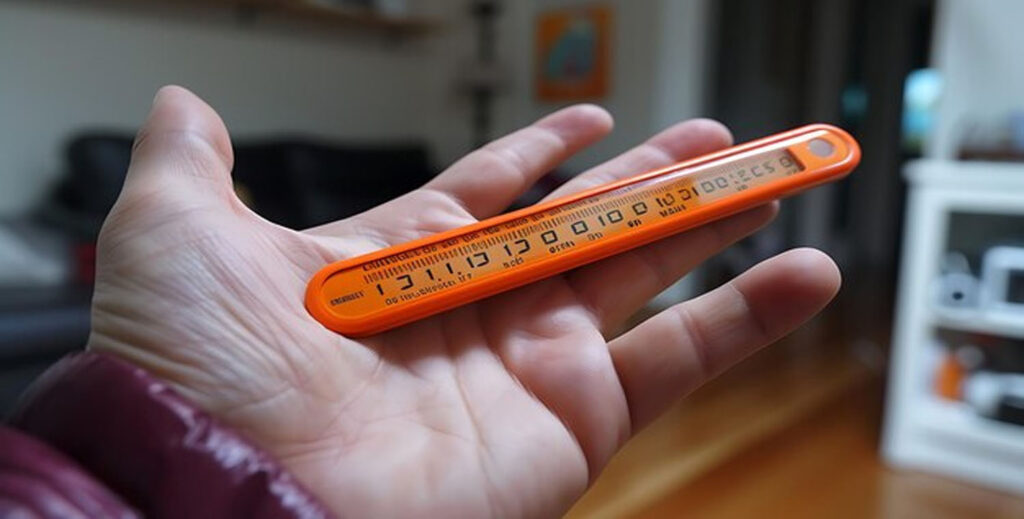Temperature Conversion: From 71°F to Celsius

Temperature conversion is a common task in science, cooking, and everyday life. One of the most frequently used temperature scales is Fahrenheit (°F), especially in the United States, while Celsius (°C) is widely adopted in many other parts of the world. In this article, we will delve into the details of converting 71°F to Celsius, exploring the formula used, the significance of the conversion, and how these two scales relate to one another.
The Basics of Temperature Scales

Before we dive into the conversion process, it’s essential to understand the two temperature scales in question: Fahrenheit and Celsius.
Fahrenheit (°F)
The Fahrenheit scale, developed by Daniel Gabriel Fahrenheit in the early 18th century, sets the freezing point of water at 32°F and the boiling point at 212°F. The scale is primarily used in the United States and a few other countries, making it essential for various applications, particularly in weather reporting and cooking.
Celsius (°C)
The Celsius scale, created by Anders Celsius in the 18th century, defines the freezing point of water as 0°C and the boiling point as 100°C at standard atmospheric pressure. This scale is part of the metric system and is used globally, especially in scientific contexts, due to its straightforward relationship with the physical properties of water.
The Conversion Formula
To convert a temperature from Fahrenheit to Celsius, you can use the following formula:°C=(°F−32)×59°C = \frac{(°F – 32) \times 5}{9}°C=9(°F−32)×5
This formula subtracts 32 from the Fahrenheit temperature, multiplies the result by 5, and then divides by 9 to arrive at the equivalent Celsius temperature.
Step-by-Step Conversion of 71°F to Celsius
Let’s apply the formula to convert 71°F to Celsius.
- Subtract 32 from 71:71−32=3971 – 32 = 3971−32=39
- Multiply the result by 5:39×5=19539 \times 5 = 19539×5=195
- Divide the result by 9:1959≈21.67\frac{195}{9} \approx 21.679195≈21.67
Thus, 71°F is approximately equal to 21.67°C.
Why Temperature Conversion Matters
Understanding temperature conversion is vital in various fields and everyday situations. Here are a few reasons why it matters:
1. Cooking and Baking
In the culinary world, many recipes are provided in Fahrenheit or Celsius, depending on the region. For example, if a recipe calls for cooking at 71°F, knowing how to convert that temperature to Celsius ensures that you can follow the recipe accurately, especially if you’re using an oven calibrated in Celsius.
2. Weather Reports
Weather forecasts often provide temperatures in both Fahrenheit and Celsius. Travelers and those living in different countries need to understand these conversions to gauge temperatures accurately. Knowing that 71°F is about 21.67°C helps individuals understand what to expect regarding clothing and activities.
3. Scientific Research
In scientific research, the Celsius scale is predominantly used due to its alignment with the metric system. Researchers working with temperature-sensitive experiments must convert temperatures to Celsius for accurate data reporting and analysis. This conversion ensures consistency in scientific communication.
4. Health and Medicine
In healthcare, temperature readings are often taken in Celsius. Understanding the conversion from Fahrenheit to Celsius can be crucial in clinical settings, especially when monitoring patients or communicating health information internationally.
Practical Applications of 71°F
Now that we’ve converted 71°F to Celsius, let’s explore some practical scenarios where this temperature might be relevant.
1. Ideal Room Temperature
A temperature of 71°F (21.67°C) is often considered a comfortable room temperature for many people. It is the standard setting for indoor climates in homes and offices, promoting comfort and productivity. This temperature is particularly relevant for those setting thermostats in their living spaces.
2. Outdoor Activities
For outdoor enthusiasts, 71°F represents a pleasant day for activities like hiking, picnicking, or cycling. Understanding how this temperature feels in Celsius can help individuals gauge their clothing choices and hydration needs.
3. Climate Considerations
In discussions about climate change and global warming, understanding temperature changes is crucial. A rise in average temperatures can significantly impact ecosystems and weather patterns. Converting temperatures allows for clearer communication among scientists and policymakers.
Common Temperature Conversions
To further illustrate the relationship between Fahrenheit and Celsius, here are some common temperature conversions:
- 32°F = 0°C (Freezing point of water)
- 50°F = 10°C
- 68°F = 20°C
- 86°F = 30°C (Warm day)
- 100°F = 37.78°C (Human body temperature)
- 212°F = 100°C (Boiling point of water)
These conversions help provide context for various temperatures people might encounter in daily life.
Tools for Temperature Conversion
In today’s digital age, various tools and applications can assist with temperature conversion, making the process easy and quick. Here are a few popular options:
1. Online Conversion Calculators
Numerous websites offer free temperature conversion calculators. Simply enter the temperature in Fahrenheit, and the calculator will provide the Celsius equivalent instantly.
2. Mobile Apps
Many smartphone applications can convert temperatures between Fahrenheit and Celsius. These apps are especially useful for travelers and cooks who frequently need to switch between the two scales.
3. Smart Home Devices
Smart thermostats and home automation systems often include temperature conversion features. These devices can display current temperatures in both Fahrenheit and Celsius, allowing users to choose their preferred unit of measurement.
Understanding Temperature Sensations
While knowing how to convert temperatures is essential, it is equally important to understand how temperatures are perceived. The sensation of temperature can vary based on factors such as humidity, wind, and personal comfort levels.
Humidity and Temperature
Humidity plays a significant role in how we perceive temperature. High humidity can make a warm day feel much hotter, while low humidity may make the same temperature feel more comfortable. For example, on a 71°F day with high humidity, individuals might feel sticky and hot, while a dry 71°F could feel much more pleasant.
Wind Chill
Wind chill is another factor that affects how temperatures are felt. A breezy day at 71°F might feel cooler than it is, impacting outdoor activities and comfort levels. Understanding these factors helps individuals prepare adequately for different weather conditions.
Conclusion
Converting temperatures between Fahrenheit and Celsius is a vital skill in today’s world. The conversion of 71°F to Celsius, resulting in approximately 21.67°C, exemplifies how temperature affects our daily lives, from cooking to weather forecasting and scientific research.






Responses